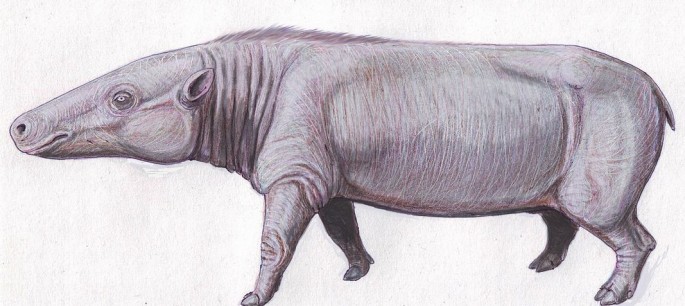It's hard to believe a water loving mammal and an ocean going mammal could have any genetic link in common but new evidence shows hippos and whales are basically cousins.
The origins of the hippopotamus have been a mystery but recent analysis of a long-extinct animal called "anthracotheres" confirms cetaceans, or the animal the group to which whales, dolphins and porpoises belong, are the hippo's closest living cousins.
"Now we can say that hippos came from anthracotheres", said study co-author Fabrice Lihoreau, a paleontologist at France's University of Montpellier. "The origins of the hippopotamus have been a mystery until now".
Anthracotheres are an extinct group of plant-eating, semi-aquatic mammals with even-toed hooves, said Discovery.
Anthracotheriidae, to which anthracotheres belongs, is a family of extinct, hippopotamus-like artiodactyl ungulates related to hippopotamuses and whales. The average anthracothere would have looked like a skinny hippopotamus with a small, narrow head and most likely pig-like in general appearance.
The oldest known fossil of a hippo ancestor dated from about 20 million years ago but cetacean fossils from 53 million years have been found. Scientists currently classify hippos with the Suidae family of pigs based on paleontological finds.
New DNA, however, indicates hippos are kin to whales. But the huge age gap between hippos and cetaceans in the fossil record still had to be explained. Until now.
The remains of a 28 million year-old animal recently discovered in Kenya has revealed an important piece of the puzzle.
This animal, "Epirigenys lokonensis", might have spent much of its time immersed in water.
It was only the size of a present-day sheep and weighed 100 kilograms. That weight is a twentieth of today's common hippopotamus.
Scientists said E. lokonensis was not a direct forefather of today's hippo. It belonged to a side branch and lived much closer in time to the ancestor from which they both branched off, thus allowing for inferences to be drawn about the ancient animal.
Dental analysis led the team to conclude E. lokonensis and the hippo both came from an anthracothere forefather that migrated from Asia to Africa about 35 million years ago. Since Africa was then an island surrounded by water, anthracothere likely swam there.
This means the ancestors of hippos were among the first large mammals to colonize the African continent, long before those of any of the large carnivores, giraffes or bovines, all of which arrived only about 18 million years ago, said researchers.
They suggest the modern-day hippo evolved independently in Africa, and is a creature truly endemic to the continent.
Until now, the oldest known fossil of a hippo ancestor dated from about 20 million years ago, while cetacean remains aged 53 million years have been found.
"We filled a gap in the evolutionary history of the hippo, bringing us closer to the point of divergence from their modern-day sister group of cetaceans," and thus a more accurate reconstruction, said Lihoreau, according to ABC News.



























